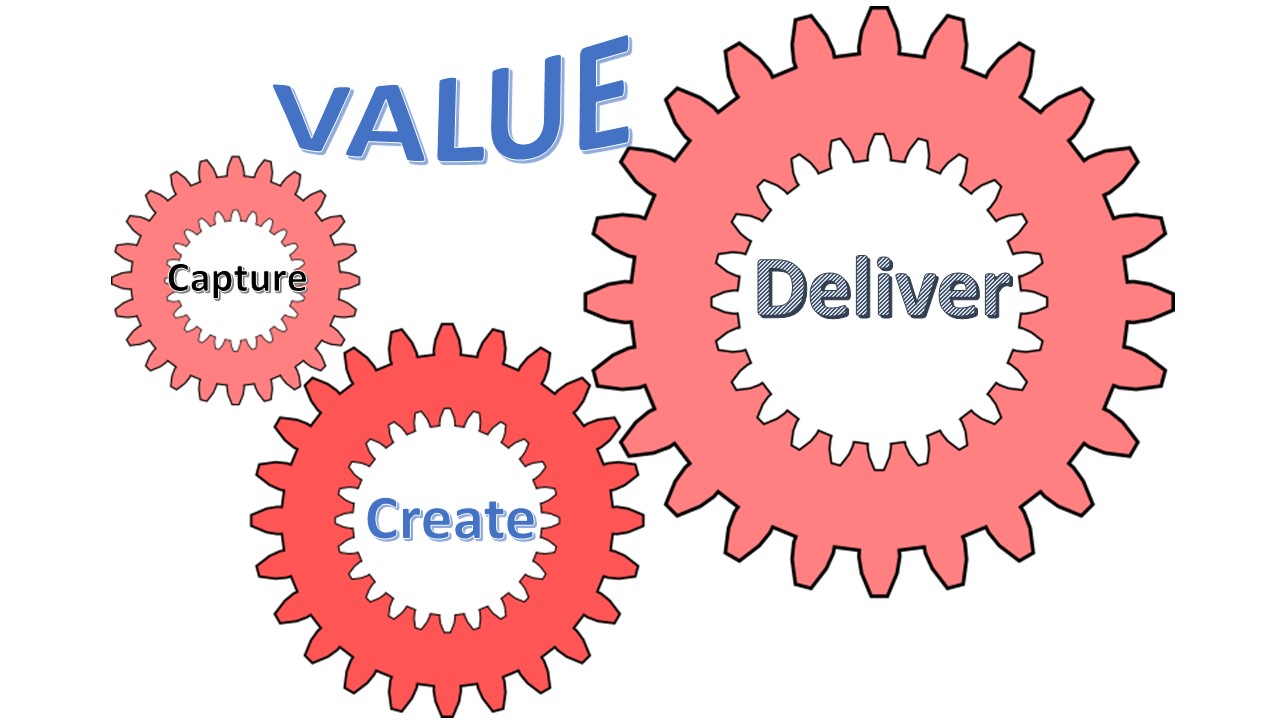Let’s first make sure we are on the same page when we talk about the value. Value is ....
.. Value is to be seen from the customer’s perspective. Value is the sum of the benefits that the customer gets, when he buys a product from the market. Taking the company perspective, we can say that revenue is for the companies and value is for them. If we all agree that the most important person in a company is the customer, according to the Total Quality Management principles, then value creation is an essential concern for the companies.
 Some people simplistically believe that the companies produce products. We should not confuse the product with the value, it has been designed to offer to the customer. All I want to say is that unless the products we produce are sold in the market, and consumed by the customer, there is no value generated. This implies that as long as the products remain unsold, they are a waste of materials and effort.
Some people simplistically believe that the companies produce products. We should not confuse the product with the value, it has been designed to offer to the customer. All I want to say is that unless the products we produce are sold in the market, and consumed by the customer, there is no value generated. This implies that as long as the products remain unsold, they are a waste of materials and effort.
The value is directed to the customer, who wants to satisfy his needs and improve his prosperity. This is effected by the functions that are incorporated by design into the product. It is the proper selection of the functions that determines the value that can be consumed by the customer.
How to define value?
The companies transform the customer needs into functions, using the quality function deployment matrices. This is a well-structured approach. There is still, however, a lot of art involved in this procedure of selecting the proper functions. Asking the customers does not always help to reveal their needs. They usually tend to propose a solution instead of explaining what they need to do. Henry Ford said “If I had asked my customers what they wanted, they would have said a faster horse”. It is far better to observe carefully what our potential customers want to do and then try to use our knowhow to implement a solution.
To capture the value, lean methodology proposes to plan a series of experiments that will in the end result in the construction of a prototype to be tested by a group of customers. Careful selection of the customers is a must. They are the so called early adopters that are willing to try a new product. They do not care about any small mistakes in the prototype and are willing to give feedback.
How to create value?
Once the company has selected the proper functions to incorporate into the prototype, it starts to design and create the appropriate value stream to produce the final product. To do that it organizes the equipment in the best way to ensure uninterrupted flow of products and value to the customer. This constitutes a horizontal process that expands from the raw materials to the customer; it is the so called value stream.
The customers’ needs are continuously changing in a market environment that keeps bringing new products and services into life, increasing the prosperity of the society. Besides, new problems and hazards appear that threat the humanity (i.e. environmental pollution, depletion of raw materials etc.). They ask for immediate solutions. The flexibility and agility of the companies determine their survival and success in the complex and continuously changing environment of the market. If sustainability has become one major condition for a company’s survival, innovation is the core of successful companies.
Lean manufacturing supported by TPM and 6-sigma ensure the uninterrupted flow of value to the end customer. Proper product development boosted by rapid experimentation maximize the value creation in restricted time frames and cost.
Value creation is a demanding game to play. It requires the focus of the companies to discover the customers’ needs. Obsession with the creation of value builds successful companies and prosperous societies.
16/10/2016
Alkis Charalambopoulos, www.leansolutions.gr
Keywords: Value, value propositions, sustainability, customer satisfaction, value creation, innovation, value stream, early adopters

